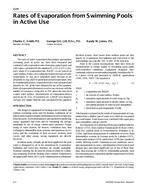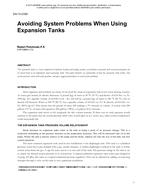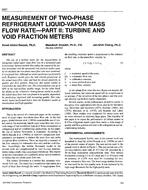Click here to purchase
With recent public building design and construction coming closer to being “airtight,” meeting or exceeding indoor air quality (IAQ) standards has become increasingly important. This driving influence and the demand for energy conservation have resulted in the goal of providing high- quality indoor air while using minimum resources.In designing systems to deliver breathable indoor air, the Ventilation Rate Procedure (VRP), which dilutes indoor air without door air, has been the standard most industry and regulatory agencies have followed for 40 years. However, this dilution does not always ensure good IAQ, and VRP may underestimate the needed outdoor airflow in some cases, or it may over estimate the needed outdoor air. As an alternative, the Indoor Air Quality Procedure (IAQP) requires the determination/measurement of contaminant levels within spaces of interest and computes the amount of outdoor air in conjunction with air cleaning/filtering that is needed to meet industry and regulatory agency standards. In some cases, IAQP can provide the needed breathable air with less outdoor air, and potentially at a lower cost, than VRP. IAQP’s drawbacks are the need for additional/reliable filtering/cleaning equipment and the need to monitor IAQ at regular intervals to ensure that contaminant levels are within acceptable ranges.This paper presents a comparison of VRP and IAQP for specific cases, using a combination VRP-IAQP model. Modeling results show how reduced intake of outdoor air compares to VRP’s requirements: where IAQP may be a better choice than VRP and where VRP may be the better choice. Typically, VRP is better for situations where filtration/cleaning is mini- mal and the building/occupants produce reasonably significant contaminant levels. IAQP is better when outdoor air intake is reduced to no less than ~50% of VRP’s intake and when filtration/cleaning efficiency is in the 50%+ range. For some specific cases, filtration/cleaning efficiency can be a slow as 20% and still improve on VRP’s contaminant concentrations.Future publications will work to demonstrate wide-ranging effects of modeling parameters, such as changing zone type, handling nonattainment regions, filter location (recircu- lated or both recirculated/outdoor air), recirculation fractions, flow reduction, 100% or proportional flow, and variable air volume (VAV). Recommendations include the need for field data which includes recording the important input information for air quality models. With that information, those models could then determine/back-out actual contaminant emissions and use those emissions to provide guidance in improving/ modifying zone air quality through outdoor air intake increase/ reduction combined with filtration/cleaning efficiency variation.
Citation: 2018 Annual Conference, Houston, TX, Technical Papers
Product Details
- Published:
- 2018
- Number of Pages:
- 18
- Units of Measure:
- Dual
- File Size:
- 1 file , 4.5 MB
- Product Code(s):
- D-HO-18-008


